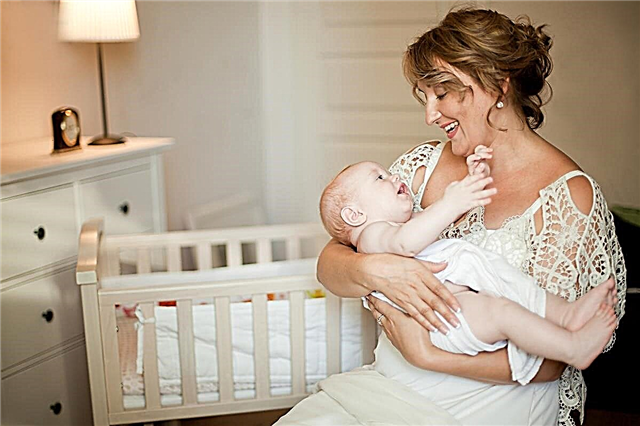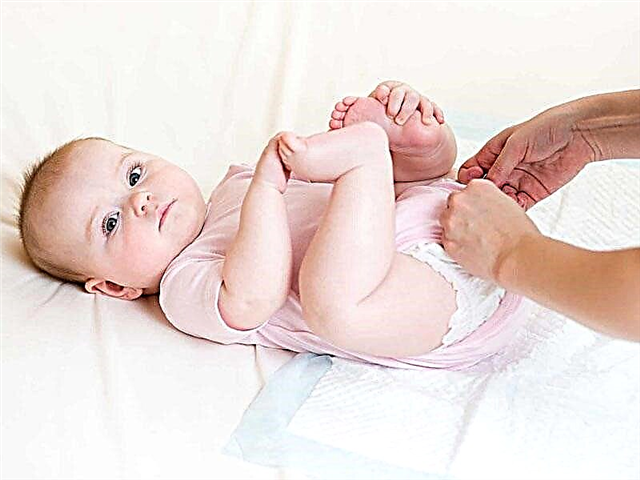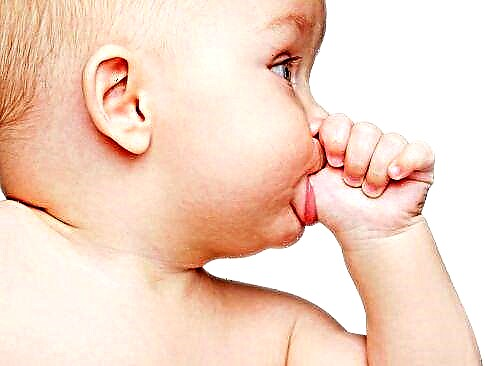
A child of 18 months is becoming more and more independent and sociable. He is already able to combine words into short phrases. The walking skill is also being improved, thanks to which the baby explores the world around him with great speed and great curiosity. Let's find out in more detail what else has changed as the toddler grows up, what skills a 1.5-year-old child pleases parents with, how to evaluate the development of the baby and how to stimulate it.

Age features
- The 18-month-old baby has already stopped waddling on straight legs, spreading his arms to the sides to maintain balance. Now the baby takes small steps, does not spread his elbows and practically does not fall. He has also learned to turn while walking and avoid obstacles. As coordination of movements improves, the baby begins to try to run.
- A child aged 1.5 years is very sociable. He wants to take part in all the events that he sees, and is also keenly interested in other people. The baby is happy to play with other children, copying their actions.
- The intellectual development of a 18-month-old child is also progressing rapidly. The kid became smarter, learned to lay out molds and build turrets. The child succeeds in setting goals and thinking about a plan for their implementation. For example, when a child is about to get an apple from a shelf, he will put a chair to the sideboard.
- The vocabulary question of a child of this age increases daily. The baby speaks not only simple words that parents understand, but also babbles a lot in his own language.
- At 1.5 years old, the child feels like a person. After realizing that the baby is able to perform many actions without help, his independence increases. The baby tries to eat, undress, wash, and carry the stroller on his own.

Height and weight
Compared to the indicators at 1 year, a child of 18 months adds about 1300 grams and about 6-7 centimeters in height. During this period, the chest circumference increases by 1.5-2 cm, and the head circumference by 1-1.5 cm.
The average indicators of physical development, as well as the boundaries of the norm of these indicators, we presented in the table:
You can use the calculator to calculate the norms for your child. The calculator is based on the standards for height and weight from the World Health Organization (WHO).
Diversify your day with a lesson according to the "Little Leonardo" method of ON Teplyakova, an expert in intellectual development.
Daily regime
For a child of 18 months, it is very important to have a daily regimen, as it allows you to properly organize the periods of wakefulness of the baby, to provide the baby with a good sleep and a correct diet. Children of this age sleep about 14 hours a day. Most of this time is spent at night (it lasts 10-11 hours), and the rest of the time the child is sleeping during the day.
Many babies at 1.5 years old still sleep twice during the day, while the first sleep lasts about 2 hours, and the second (afternoon) is shorter. It is at 18 months that some babies switch to one sleep during the day for 2.5-3 hours.
It is recommended to go for walks with a 1.5-year-old child twice a day. If the weather is good, then it is worth organizing the walk so that it has a daytime sleep (then the baby will sleep in the fresh air). Depending on the weather, daily walks can take 2-6 hours. Walking is not recommended if the air temperature is below -10o, very strong wind or heavy rain.
The baby's nutrition at the age of 1.5 years remains five times a day with intervals between feedings up to 4 hours. Offer your baby food at the same time every day and do not allow very long breaks between meals. On average, babies of 18 months eat from 1000 to 1300 ml of food per day (more precisely, the daily volume can be found by dividing the baby's weight by 9). In one meal, the child eats about 200-260 ml of food.
Many children who were breastfed before 1.5 years of age begin weaning. Doctors advise to make it gradual, then both the mother's chest and the baby's psyche will not suffer. If the mother is still breastfeeding, she will note that in the daytime the baby remembers the breast less often (mainly before bedtime, after eating, after falling and in similar situations), but at night (mainly in the morning) it sucks very actively.
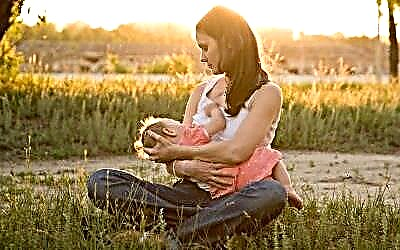
The food of a one and a half year old baby is becoming more and more diverse. It already contains sweets, salt, fresh herbs, some spices. However, the food remains childish and differs significantly from that of an adult. The crumb is still not allowed to eat fried foods, sausages, smoked meats, sausages, fatty meats, mushrooms, chocolate, exotic fruits and some other products.
Around the clock all 1.5 years it is very difficult to be with a child, so many mothers break into crumbs. For information on how not to yell at a child, see the video by Larisa Sviridova.
What should a baby be able to do?
Most children at 1.5 years old are able to:
- Walk without support. Some kids are already able to run and jump.
- Climb onto the sofa.
- Pronounce up to 20-40 lightweight words.
- Eat with a spoon.
- Understand a lot of what the adult says (answer requests and questions).
- Bend over when he wants to pick up a toy.
- Pull a toy tied to a string.
- Point out the subject that interested him.
- Flip the cardboard pages of children's books. Show familiar images in books.
- Go up and down the stairs.
- Build a tower using 2-4 dice
- Throw the ball and kick it.
- Drink from a cup.
- Show body parts.
- Take off your shoes and coats on your own.
- Draw with crayons and pencils.
- Some children ask for a potty.
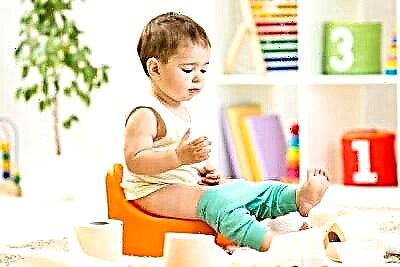
For information on how to teach a baby to ask for a potty, and is it worth worrying if a child at 18 months does not walk on it, see the next video of Dr. Komarovsky.
Classes
- To develop logic, invite your child to collect from many different objects only those that the mother asks for (for example, only red or only balls).
- Teach your toddler to sort toys by color, size, and shape.
- Offer the baby to collect puzzles from 2 parts, as well as make simple figures from 2-3 parts (mushroom, house).
- Give your child inlay frames and sorters to play with. Also, play with clothespins, locks, knockers.
- Teach your baby to add a pyramid from cubes of different sizes, as well as build a tower from cups folding into each other.
- To develop attention, invite the baby to look for a pair, using lotto cards, socks or mittens for this game.
- Offer to find an object in the room by name or by its characteristics (find soft, find blue).
- Play hide and seek with your baby so that it is easy for the child to find you.
- Teach the child in the game about the properties of objects. Let the baby learn to distinguish them by size, temperature, quantity, geometric shape, color, height, softness, dryness, cleanliness, and other characteristics.
- Chat with your little one about home, transportation, vegetation, animals, food, furniture, body parts, natural phenomena, and more.
- In addition to drawing with crayons and felt-tip pens, offer a bit of paint. You can draw with your fingers, a sponge, a brush.
- Start mastering coloring (paints are best for this).
- Sculpt from dough or plasticine, making tortillas and sausages. Also make appliqués with a tiny amount using torn paper or cereals.
- Offer the baby to string not only pyramid rings, but also large beads.
- While playing with the water, show your toddler how to collect the water with a sponge and then squeeze out the sponge.

Tips for parents
- Buy quality toys for your child. They should be bright, have an interesting shape and a texture that is pleasant to the touch.
- Take time to “read” books together, looking at pictures with your little one and discussing them.
- Talk to the baby more often and listen carefully to his words. Ask again, and also clarify what the baby said so that you get a dialogue.
- Whenever possible, let your little one make decisions on his own, such as choosing a T-shirt for a walk.
- Always praise your baby when his trial is successful to stimulate the baby's further development.
Do not forget about child development in the musical sphere: conduct a musical lesson, which is shown by M. L. Lazarev, an expert in musical development.

